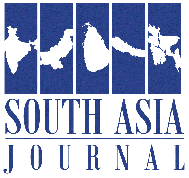 SUNAINA KUMAR
SUNAINA KUMAR
Growing up in India, it was most common to hear the word “population” juxtaposed with “explosion”, like a frightful bomb that would go off in our faces. The first known use of the term “population explosion” is from 1903, according to the Merriam Webster Dictionary. The threat of the population bomb is gone for good, reflecting major shifts in demography over the last century.
In April 2023 when India reached 1,425,775,850 people, it surpassed China’s population to become the most populous country in the world. India’s population is expected to grow for several decades and could peak at 1.7 billion by the 2060s, while China’s population is already in decline, according to UN estimates.
Couched behind the colossal numbers are several contradictory demographic trends that have taken root in different parts of the country.
Unlike China, which had a centralised approach to population control, India’s federal structure had state governments enact their own policies causing diverse impacts in different regions of the country.
The total fertility rate in India has declined from 3.4 children per woman in 1992-93 to 2.0 children per woman in 2019-21, a result of national family welfare programs which started in the 1950s and used a mix of incentives and disincentives to curb population growth. At 2.0, the current fertility rate in India has dipped below population replacement level of 2.1 children per woman. Population in India will however continue to grow, concentrated mostly in the northern states of the country on the basis of demographic momentum, a phenomenon that results from a large number of young adults in childbearing years.
A north-south divide
At the same time, falling birth rates are leading to growing anxiety about population decline in other parts of the country. The government in the southern state of Andhra Pradesh recently rolled back a policy which barred people with more than two children from contesting elections in local government. The policy, which was in place for 30 years, was meant to check population growth by disincentivising people from having more than two children. The total fertility rate in Andhra Pradesh has fallen to 1.5, well below the replacement level and closer to countries in the European Union which has a fertility rate of 1.46 and Australia at 1.5. The political leadership of the state is urging women and families to have more children as an economic imperative.
It’s no different in the neighbouring state of Tamil Nadu, where leaders are promoting large families, signalling a dramatic U-turn in policy. Compared to the north, the five southern states of India are economically more advanced and have been highly successful in slowing population growth by focusing on development and women’s empowerment.
Unlike China, which had a centralised approach to population control, India’s federal structure had state governments enact their own policies causing diverse impacts in different regions of the country, such as the southern states where birth rates dropped below replacement level two decades before the rest of the country.
Declining population is no longer confined to the economically developed southern or western India. Smaller states in all of the country are grappling with the effects of demographic transition, with varied implications for policymaking. The fertility rate in the north-eastern state of Sikkim has plunged to 1.1, with the state government going into overdrive, offering additional increments for employees with more than one child, along with free childcare, paternity leave, and financial assistance for IVF procedures.
Competing development priorities
India has one of the youngest populations in the world: 65 per cent of the country is under the age of 35, a much vaunted statistic. India’s demographic dividend – by 2030 one out of every five working-age people in the world is projected to be Indian – is cited as a matter of national pride. To reap the demographic dividend, the country needs to create new jobs for the millions that enter the workforce every year – India will need to add 7.85 million jobs every year until 2030 according to the government. It will need to simultaneously address the drastic skill gaps in the workforce and the wicked problem of exclusion of women from the workforce.
Alongside this phenomenon, India like China is rapidly ageing, which is linked with declining fertility, falling mortality risks and higher life expectancy in both countries. The speed and scale of ageing is a global concern but in a country like India, it is a race against time, as the country will need to get richer before it gets older. The elderly population, which is nearly ten per cent of the total population, is expected to more than double by 2050. India will be caught between prioritising the youth and taking care of the elderly by providing quality healthcare and social protection.
Governments and policymakers have their work cut out. One thing is for certain, demographic transition in India will have consequences for the rest of the world.
source : lowyinstitute
